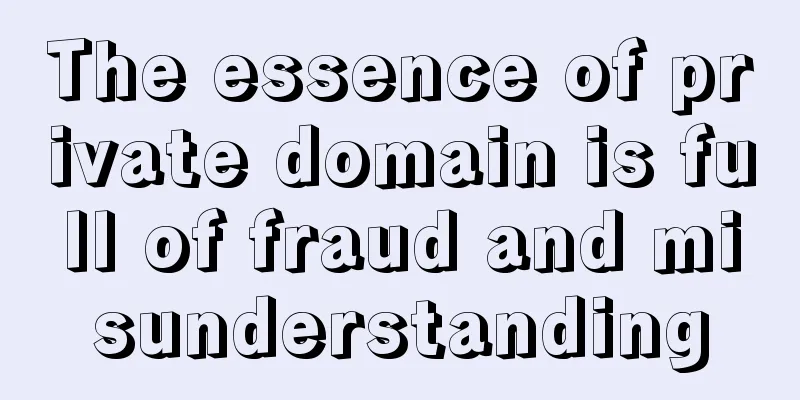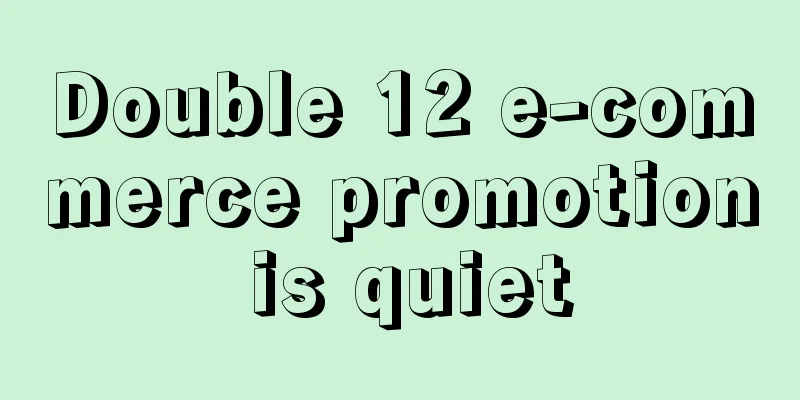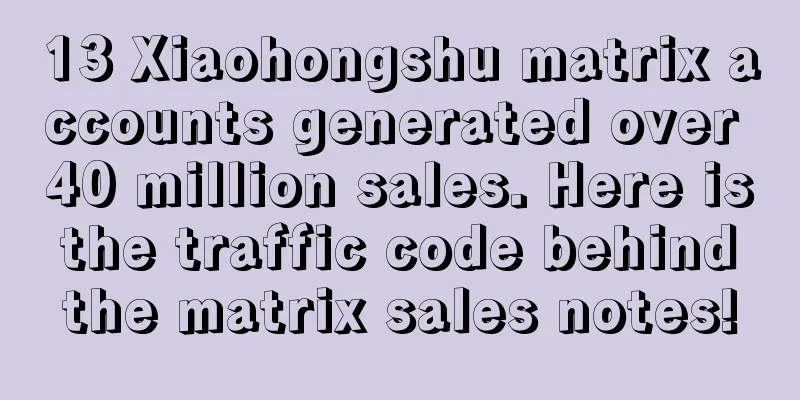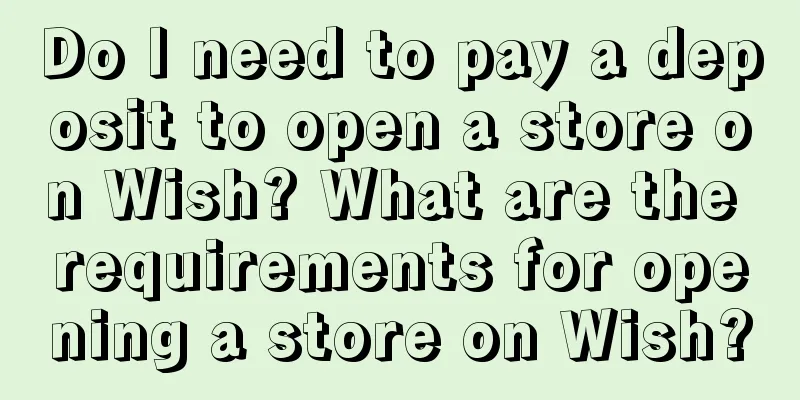How to build a good brand: attack, defense, and defense

1. The founder’s primary task
The battle zone is chosen based on the recognition of advantages and the strength of the enterprise. It is decided by one battle. As the saying goes: If you know the place and the day of battle, you can fight a battle thousands of miles away - Sun Tzu's Art of War. 1. What are you?Many products don’t sell well, not because they are bad, but because they are too good. They are so good that companies put their products in front of consumers before they have any idea of the category or the value of the category. This approach is not innovation, but adventure, or even a challenge - a challenge to consumers’ cognition. As a category creator, the biggest market challenge comes from: what are you and who are your potential consumers. That is: how to clearly define and convey the value of the category; anchor the value anchor in the minds of consumers without an anchor point - creating a new category from scratch depends on the mobilization of cognition, not the few resources in the hands of entrepreneurs. The real resource lies in mobilizing the existing cognition in the minds of consumers, discovering consumer cognition and gaining insight into potential market potential. With cognition and transactions, the focus of enterprises is also the source market and source crowd; There is awareness but no transaction, so the company can focus on the incremental market in the second place; There is no knowledge, but there are transactions, which is the market where companies are most likely to make mistakes; A market with no cognition, no transactions, and no gains in the short term. Almost all consumer products you can see are based on strong functions and strong benefits of products at the beginning of their launch, refining core selling points, establishing cognitive advantages, and then bringing in transactions. That is: eliminate the product's sharpness, the clearer the cognition, the clearer the transaction. Whether it is Coke or Wanglaoji; whether it is today's new consumer products or old brands that have already achieved success.
For example, in December 1995, during the Spring Festival Gala, an advertisement titled "Red Bull Comes to China" made Red Bull a household name. In 1995, there was no Internet, no WeChat, no Moments, and no TikTok. Television was the super media at the time. The Spring Festival Gala was the highlight of the brand's communication potential. However, at the beginning of the category, advertising should convey clear usage scenarios and unique differentiated functional points. The publicity of Red Bull increased the popularity of the product in a short period of time. As for what Red Bull is - what are you (extracting the value of the category), this key question does not seem to be clarified. The role of advertising is to amplify the coverage of single-point information (characteristics, value, function, benefit). If the product's point is not eliminated, the expected effect of advertising cannot be achieved. There are two concepts involved here: brand awareness and brand recognition. A brand with awareness is better than a brand without awareness; a brand with recognition is better than a brand without recognition.
2. What are you like? Example: The car needs gas, I want to drink Red Bull
Drivers were reminded to buy a box of Red Bull at the gas station convenience store when refueling and put it in the car, so that they could have a can when they felt sleepy. Demand can be stimulated, and purchasing is a practical issue. The price of 6 yuan per bottle and 144 yuan per box was a week's salary for the working class at the time. This was a purchase decision that many people needed to consider. Yan Bin personally led a team to Chang'an Avenue, handing out cans of Red Bull to taxi drivers, hoping to attract more people to the brand through tasting and free drinks. In fact, it was not until 2010 that the beverage industry collectively entered the 6 yuan era, while Red Bull had been priced at 6 yuan for 25 years since 1995. (Nine years after 2010, Yuanqi Forest was the second brand to sell beverages at 6 yuan and succeed. Pricing is a science) Origin market = Origin crowd + Origin channel The origin market is not an independent concept, but a product of the continuous superposition of origin people and origin channels. That is, through the origin crowd, the origin channel is clarified; through the origin channel, the origin crowd is enlarged. As the origin crowd and the origin channel are continuously superimposed, the origin market gradually becomes clear. After the origin market is clear, we select the most exemplary market based on sales data and users as the strategic target market. The significance of the strategic target market is that it can be grown, quantified, and replicated, and it can prepare data, strategies, and models for entering the mainstream market later. Through the original population and the original channels, the original market can be clearly identified. The publicity of "Cars need to be refueled, I want to drink Red Bull" and the operation support around drivers have enabled Red Bull to complete the early innovative users and early users stage, but the driver population is relatively small. Distributors complained that there was something wrong with the price of Red Bull (6 yuan is too high). 3. An entrepreneur’s intuition often trumps rationality at critical momentsAn entrepreneur's intuition often prevails over rationality at critical moments. The birth of "When you are sleepy or tired, drink Red Bull" is also full of legends. Faced with early market difficulties, Yan Bin decided to change the slogan "Cars need gas, I want to drink Red Bull". He gathered all the executive teams in a hotel in Changping, Beijing, brainstormed behind closed doors, and asked everyone to read it out loud in their own dialect. In the end, Yan Bin decided to use the slogan "Drink Red Bull when you are thirsty, drink Red Bull when you are tired and sleepy." (The only slogan that can be compared with Red Bull is "If you are afraid of getting angry, drink Wanglaoji.")
Sports: Introduced F1 events to China, sponsored NBA China, sponsored the Chinese national badminton team for seven consecutive years, signed Lin Dan as the brand spokesperson, and launched the "Badminton Championship" Red Bull City Badminton Tournament. At the same time, the country actively carried out various sports promotions, sponsored more than 20 domestic top extreme sports athletes, and held the World Wingsuit Flying Championship, Qiantang River International Surfing Competition, National Badminton Championship, etc.
Office: Launched the "Red Bull Time is Up" marketing campaign for office workers. Office workers can apply for free Red Bull drinks online, which will be delivered by the Red Bull Energy Team. The distribution activity was carried out in 3,000 office buildings in 14 cities across the country. (To be precise, it was not a one-time action, but a major action that lasted for 8 years) From "I need to refuel my car, I want to drink Red Bull" to "I drink Red Bull when I am sleepy or tired". From a single scenario (drivers feel sleepy while driving), a single channel (gas station), and a single group of people (drivers) to multiple scenarios, multiple channels, and multiple groups of people, plus the ultra-long-term deep cultivation of trial and free drinking at the terminal for white-collar workers, Red Bull has crossed the growth gap. 3. Basic foundation for growthRed Bull's sales exceeded 10 billion in 2012, and its annual sales have remained around 20 billion since 2014, reaching 23 billion in 2015. It has become the only major single product in the Chinese beverage market, except Coca-Cola, to have annual sales of 20 billion for many consecutive years. The emergence of a super single product is the creation of a category market. A weak category cannot breed strong brands or super single products. Behind the brand is the force of the category. From 2014 to 2019, the total sales of energy drinks increased from 465.216 billion yuan in 2014 to 578.560 billion yuan in 2019, with a compound growth rate of 4.46%. According to "Energy Drinks in China", the CAGR of China's functional beverage market in the past three years was 15%, making it one of the fastest growing categories in the beverage market. In 2022, the retail sales of functional beverages in my country are expected to reach 68 billion yuan. 2. Follow, imitate, and low price1. Each party's basic base and fundamentals determine the basic strategy, which is to attack where it cannot defendThe leader has already gained recognition advantage, so if you want to be the second, you have to be different. Consumers will not remember you just because you are the same as the leader, but they will choose you just because you are different. For example: Wanglaoji you are in a small tin can, and I am in a big bottle - Heqizheng bottled is more enjoyable, and what we sell is affordable. As a latecomer, the first question to answer is: where do your customers come from - from your competitors. For example, Pepsi successfully converted Coca-Cola consumers in the first phase through a 50%-off sales strategy; Heqi Zhengtong did the same by selling larger bottles, which was exactly the same as Pepsi, targeting price-sensitive customers in the category market who had no preference for brands but were relatively sensitive to prices. In addition, it is important to note that phased pricing strategies are not the essence of differentiation. The essence of differentiated competition is to form differentiated cognition on the consumer side, guide facts through cognition, and strengthen cognition with the help of facts. On the one hand, it is the factual differentiation support at the product level, and on the other hand, it is the differentiated cognitive segmentation of consumers. Therefore, the construction of differentiation is not just about products, but also about guiding consumers' cognition, insight into cognition, and even cognition compliance. Red Bull is in the front, and Dongpeng is in charge of it, first bottling, then canning. When you are tired, drink Dongpeng Special Drink, isn't it also fun?
Follow the leader to make products, verify the needs and then expand them; follow the low-price strategy closely and focus on the region to occupy positions; be the second best without making a fuss and it is not shameful to adopt others’ ideas; have deep expertise in the regional market and make a fortune quietly.
Following, imitating, and offering low prices effectively cut into the market when facing the leadership of the category leader: Dongpeng Special Drinks achieved its goal through product, price, channel, and promotion, focusing on the Guangdong market and fighting a beautiful low-price flanking battle. It made a breakthrough in the local market and accumulated a certain amount of funds. It is said that before Dongpeng Special Drink was launched, it was piloted in Dongguan, and the Lin brothers even issued an order: they would not enter the national market until sales of 100 million yuan had been achieved. After the local market exceeded 100 million, Dongpeng began to move towards more markets. In 2013, it invited Nicholas Tse to be its spokesperson and imitated the Red Bull slogan "When you are tired, drink Red Bull" to launch the "When you are tired, drink Dongpeng Special Drink". Red Bull entered the Chinese market and spent ten years to create the consumer scenario of "When you are tired, drink Red Bull" in the minds of consumers. Even though the imitation was so simple, direct and crude, it was really effective, and Dongpeng Special Drink quickly became the second largest brand in the industry. In 2016, Red Bull was involved in a trademark dispute with Thai Tianshi. With advertising sharply reduced, Dongpeng Special Drink increased its media advertising and promotion efforts. A year later, Dongpeng Special Drink's annual sales increased from more than 3 billion to more than 4 billion. By the end of June 2020, Dongpeng Beverage had 1,386 distributors, and its products covered about 1.2 million terminal stores. 2. Pepsi textbookIn fact, all the strategies you can think of have already had real and proven successful counterparts (strategies) in brand history. Coca-Cola occupies the leading position in the market, while Pepsi-Cola first adopted a low-price strategy and shouted the slogan "Buy two for 5 cents", seizing some price-sensitive markets (Dongpeng Special Drink VS Red Bull Phase I), and then gradually evolved into a frontal offensive war. In the confrontation, Coca-Cola also launched its own large bottle. At this time, Pepsi discovered that it was not the packaging that was difficult for Coca-Cola to change, but their promotion of "authenticity" that was difficult for Coca-Cola to change. Authentic means traditional and classic. Pepsi hit the opposite of Coca-Cola: cola for young people. By showing the lifestyle of young people and resonating with young people, this strategy has become the main line of Pepsi's fight against Coca-Cola for decades. Young people's brand appeal has increased Pepsi's domestic market share from 21% to 35%. Even in Atlanta, where everyone likes Coca-Cola, Pepsi's sales have increased by 30%. 3. Standing opposite Red Bull, a new generation of monstersFrom 2000 to now, the best performing public company in the United States is an energy drink company called Monster Beverage. Its current sales are about 4 billion US dollars, profits are about 1 billion US dollars, and its market value exceeds 30 billion US dollars.
Red Bull is keen on sponsoring the world's top events such as skiing and Formula One. Monster focuses on relatively niche extreme sports, such as extreme motorcycles, skateboards, and BMX. Compared with conventional sports, these extreme sports are more exciting and wilder. They focus on young people's extreme sports to penetrate the crowd and become the choice of the new generation.
ConclusionThe vast majority of strong brands were created in the early stages of a category’s rise. The advantage of being the first in a category comes first from cognitive advantages. The opportunities left for the second and third places are to discover, create, and make objective choices based on cognitive advantages and corporate strength (offensive warfare, defensive warfare, flanking warfare, guerrilla warfare). 1. How to be the boss
2. How to be the second one
3. How to be the third child
The battlefield (creating cognitive advantages), the battle zone (focusing on advantageous resources), the battle situation (brand differentiation strategy), and the battle momentum (grasping the trend of category differentiation) are based on both advantageous cognition and corporate strength. The battle zone is chosen and the outcome is decided in one battle. As the saying goes: If you know the place and day of battle, you can fight a thousand miles away - The Art of War by Sun Tzu. Author: Houshan Keju; Source public account: New Consumer Brand Research Society (ID: PPD6977) |
>>: The essence of copywriting is translation
Recommend
Can I join Lazada now? Is it easy to pass the review?
Ladaza is one of the promising e-commerce platform...
Tourism changes: from outbound to county-level, no more high-end games
With the end of the 2024 May Day holiday, the tour...
18 practical experiences of a women's clothing e-commerce boss on women's clothing selection
If you want to start a women's clothing busine...
Oriental Selection is rushing to test "low price and high quality"
The two-year anniversary of Oriental Selection has...
After spending 1.6 billion on advertising, why is Nezha Auto not remembered by people?
This article mainly discusses the phenomenon that ...
What is the main reason for the decline in Amazon Buy Box win rate?
On the Amazon platform, everyone can buy some prod...
Where can I view eBay data? How can I view traffic?
Now there are more and more friends who are born w...
What should traditional brands do in 2023?
How should traditional brands leverage their own a...
Avatars that make leaders lose the desire to communicate: Find yourself behind thousands of avatars
Faced with stressful work, the mentality of worker...
How to return unpackaged goods from Amazon? What is the method?
After shopping on the Amazon platform, we only nee...
Some thoughts for May 2023!
This article is the author’s personal summary of o...
The traffic code behind the incredible
I wonder if you have noticed that some originally ...
How to build user tags to facilitate precision marketing
After so many years of operation, are you still do...
They’re all marketing, so why do expensive ice creams have different fates?
There are only a few expensive ice cream brands, b...
Can Shopee individual business owners register as a self-employed person? What is the registration process for Shopee individual business owners?
Shopee has been developing better and better in re...









